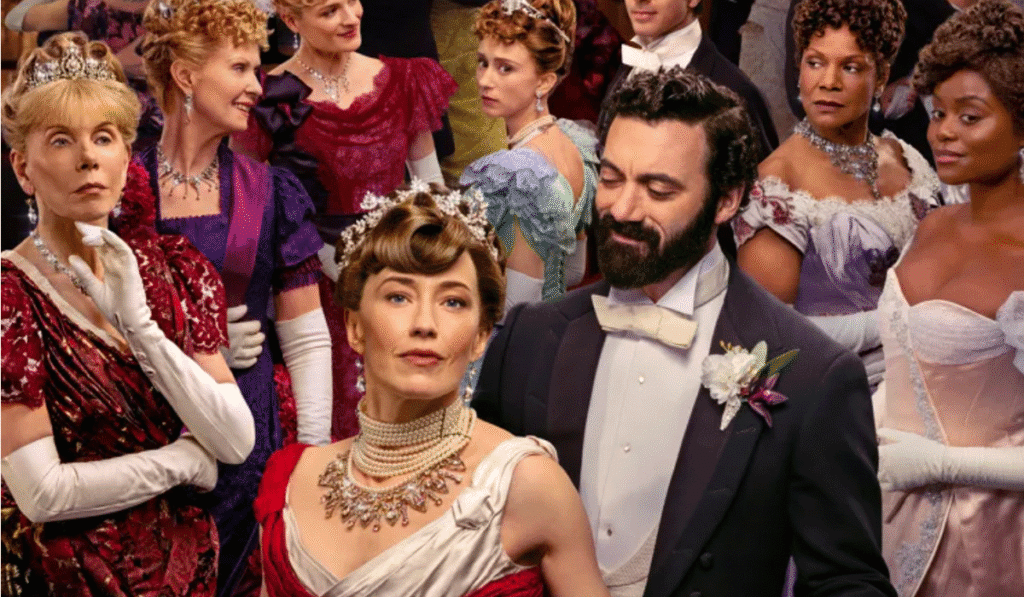Many don’t realize that The Gilded Age, the very grand and expensive HBO/Max/HBOMaxAgain show, was actually devised for a very specific audience: quirky early millennial women who studied theater in college and briefly tried their hand at acting before ultimately becoming writers.
That the show seems to have mass appeal is surprising because it was definitely created for that very niche subset of people.
How did HBO/Max/WhatAreWeDoing achieve this? They set the show in 1882. Because they know quirky Xennial women can’t resist a lush period drama. Most of them own at least one corset, though they’re not sure why.
And, of course, quirky Xennial women are here for the historical references. That young artist you just saw onscreen? That was John Singer Sargent. And they knew it. They reached over to poke their husbands, “Do you know who that is? Stanford White! The Jeffrey Epstein of his time!”
Xennial women don’t need a TV critic to explain which character is a thinly veiled Vanderbilt. “WE KNEW THAT ALREADY,” they scream silently. Their husbands are already asleep.
But just setting its drama in the past was not enough for The Gilded Age. They also cast venerable theater actors from the early aughts because they knew that all quirky early millennial women are also theater nerds. Nerds who attended a small liberal arts college during the early aughts, when student rush was still a thing.
They wanted these nerds to be able to turn to their husbands and say, “I saw her in Piazza.” And, “She was my favorite Fosca.” And even, “I went to drama school with her. She was the year below me, and she’s actually nothing like her character. I should reach out, I still have her email.”
Or more often, “Wake up, Greg. This episode has fourteen more minutes left. And an hour-long post-show podcast.”
If she wasn’t already onboard the Titanic that is The Gilded Age, then the “plot” surely sealed the deal. The quirky Xennial woman has two children under five, and she. Is. Tired. This show knows that. It knows that after washing the water bottles and the diaper covers, she has only an hour before bed. She doesn’t want a show that will challenge her or inspire her or even charm her. She wants a show filled with a monotony of frippery that she can watch in bed, her eyes glazed over, while she simultaneously scrolls through the Maisonette warehouse sale for discounted Misha & Puff.
She wants a show that feels like you are watching it for the twentieth time, even on its first viewing.
Most of the credit goes to Gilded Age creator and member of the literal landed gentry, Julian Fellowes. Here was every opportunity to depict how unrestricted capitalism and unrestrained consumption are evils that form the bedrock of American society and also contribute to its rot. And he said, “No.”
Let’s not have money be the bad guy. Let’s refuse to have any “take” on the era of history we’re covering. Let’s show zero awareness of the critique embedded in the time period (and show’s) actual name. Instead, we’ll say, hey, there are plenty of decent robber barons. And some of them are pretty sexy even. It’s okay for you to keep online shopping, Xennial woman. Click-click.
Over 2.5 million viewers tuned in for the season 3 premiere of HBO/Max/GodIsDead’s The Gilded Age, making it an unqualified success. Which means that more than just quirky Xennial women are watching. I have to ask: WHY DOES ANYONE ELSE LIKE THIS? BECAUSE THIS PERFECT AWFUL SHOW WAS MADE SPECIFICALLY FOR ME. And also: DOES ANYONE WANT TO WATCH THIS WITH ME? BECAUSE GREG DOES NOT GET IT.
Greg groans sleepily. “Can you please stop talking to yourself? One of us has to work in the morning.”
How did I, a Gilded Age, end up with such a Severance?

